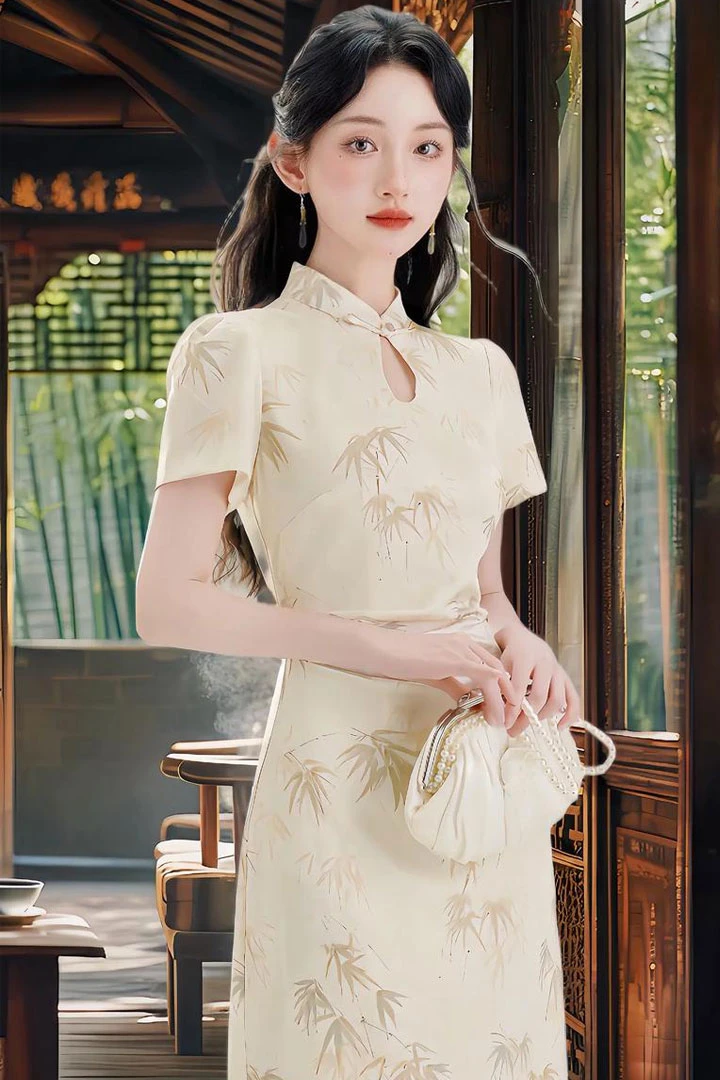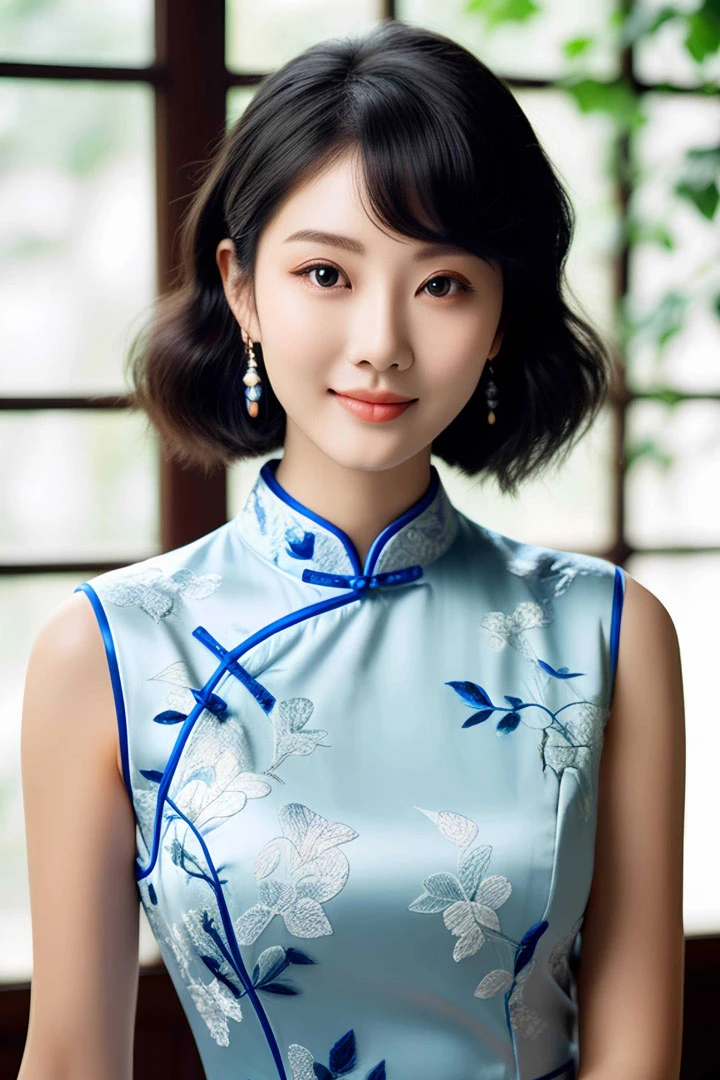From Cotton to Silk: The Versatile Materials Shaping Contemporary Qipao
The qipao, a garment steeped in Chinese cultural history, has undergone a remarkable evolution in recent years. This iconic dress, once a symbol of 1920s Shanghai g,amour, has reemerged as a versatile piece of clothing that bridges the gap between tradition and modernity. At the heart of this renaissance lies the diverse array of fabrics now used in qipao production, each bringing its own unique characteristics to this timeless design.
Jacquard cotton, a favorite among qipao enthusiasts, offers a perfect blend of comfort and elegance. This fabric, characterized by its intricate woven patterns, provides a subtle texture that catches the light in fascinating ways. Unlike printed cottons, jacquard patterns are woven directly into the fabric, creating a more durable and sophisticated finish. The versatility of jacquard cotton makes it suitable for a wide range of occasions, from casual daywear to more formal events.
For those seeking the pinnacle of luxury, silk remains the gold standard in qipao fabrication. Composed of fibroin and sericin proteins, silk offers an unparalleled combination of softness, sheen, and drape. The natural properties of silk, including its ability to regulate temperature and moisture, make it an ideal choice for both comfort and style. However, the delicate nature of silk requires careful handling and maintenance to preserve its beauty over time.
In response to the demands of modern life, stretch cotton has emerged as a popular choice for qipao construction. This innovative fabric combines the breathability of cotton with the flexibility of synthetic fibers, resulting in a garment that moves with the wearer. The added elasticity allows for greater freedom of movement, making stretch cotton qipaos suitable for a more active lifestyle. While this material offers ease of care and comfort, it may lose some of its elasticity over time, requiring careful consideration in terms of longevity.
The introduction of lace, velvet, and even leather into qipao design represents a bold departure from tradition, reflecting the garment's evolving role in contemporary fashion. Lace qipaos offer a delicate, feminine aesthetic that's perfect for formal occasions, while velvet brings a touch of opulence and warmth to winter wardrobes. Leather, perhaps the most avant-garde choice, pushes the boundaries of qipao design, creating striking, edgy looks that challenge conventional notions of traditional Chinese dress.
This diversification of materials not only expands the qipao's aesthetic range but also its functional versatility. Modern women can now choose a qipao that suits their personal style, body type, and the specific demands of their lifestyle. A jacquard cotton qipao might be perfect for a business meeting, while a silk version could be reserved for gala events. The stretch cotton variant offers comfort for all-day wear, bridging the gap between formal attire and practical functionality.
Balancing Heritage and Innovation in Chinese Fashion
However, this material revolution in qipao design is not without its challenges. The use of non-traditional fabrics has sparked debates among purists who argue that certain materials deviate too far from the garment's cultural roots. Others contend that this evolution is necessary for the qipao to remain relevant in a rapidly changing world.
Moreover, the choice of fabric significantly impacts the garment's care requirements. While some modern materials offer easy maintenance, others, like silk, demand meticulous attention. This divergence in care needs reflects a broader tension between preserving traditional craftsmanship and adapting to the conveniences expected in contemporary life.
The environmental impact of different fabrics used in qipao production has also come under scrutiny. As consumers become more environmentally conscious, there's a growing demand for sustainable materials and ethical production methods. This has led to innovations in fabric technology, with some designers exploring eco-friendly alternatives that maintain the qipao's luxurious feel while reducing its ecological footprint.
The qipao stands at a fascinating crossroads. Its ability to incorporate new materials while retaining its distinctive silhouette demonstrates a remarkable adaptability. This flexibility may well be the key to its continued relevance in the fashion world. As designers experiment with cutting-edge fabrics and production techniques, we may see qipaos that not only honor their rich heritage but also embrace the possibilities of tomorrow's technology.
The modern qipao, with its diverse array of materials, represents more than just a fashion statement. It embodies the ongoing dialogue between tradition and innovation in Chinese culture. As wearers don these garments crafted from jacquard cotton, silk, stretch fabrics, or more experimental materials, they participate in a living tradition—one that continues to evolve while maintaining its connection to a rich cultural past. The qipao's material evolution serves as a tangible reminder that cultural heritage, when allowed to adapt and grow, can remain vibrantly relevant in the modern world.



